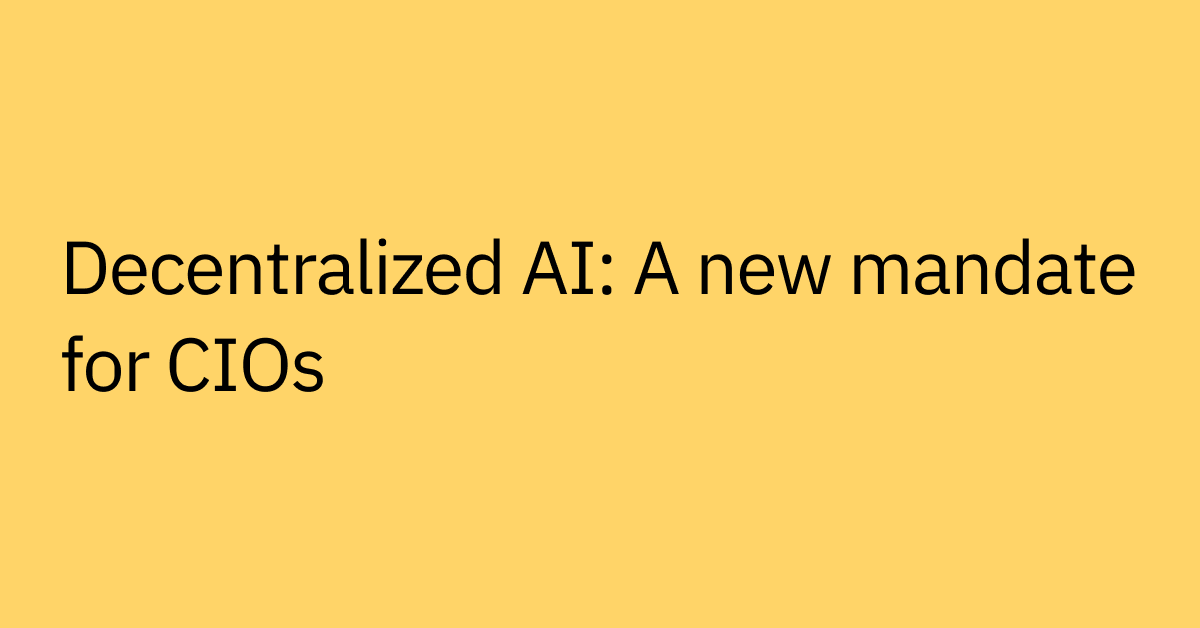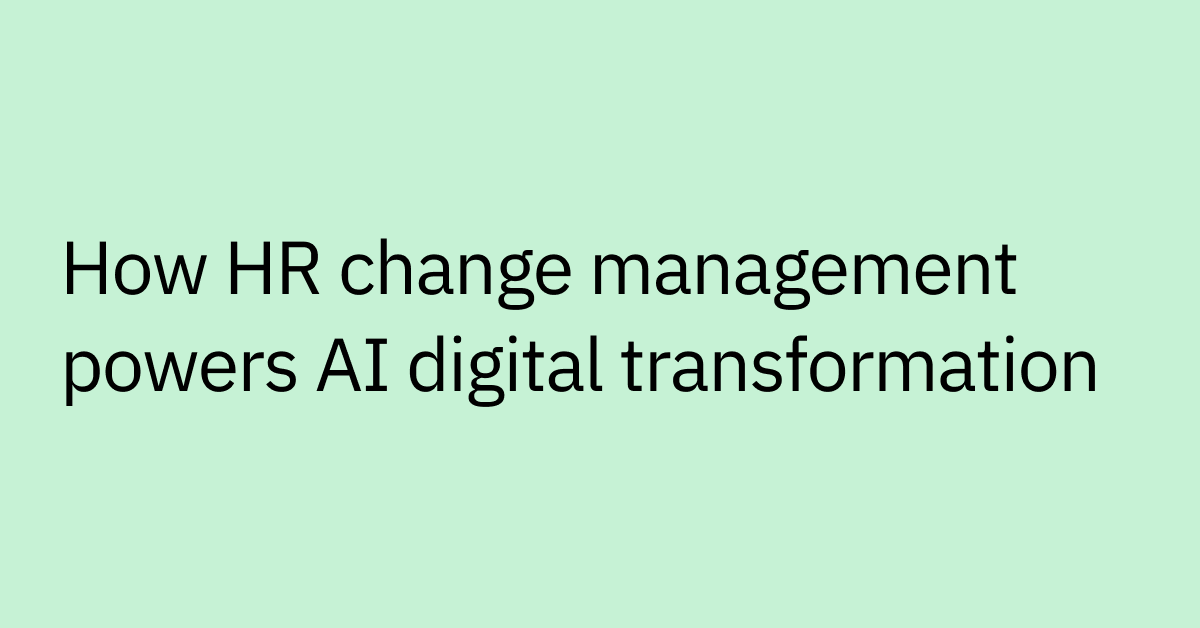Table of contents
Highlights
- AI is now core to HR: Enterprises are moving beyond pilots to full-scale AI adoption, using automation to eliminate repetitive tasks and free HR for strategic work.
- Personalization at scale: AI enables tailored, localized, and role-specific experiences for global employees, moving away from one-size-fits-all HR systems.
- Skills over roles: Organizations are beginning to shift to skills-based models, with AI identifying gaps and recommending growth opportunities.
- Always-on employee support: AI assistants help provide instant, 24/7 help for hybrid and global workforces, replacing outdated case management models.
- Data-driven HR strategy: Real-time workforce insights powered by AI help leaders to understand issues, boost engagement, and drive better business outcomes.
You start your Monday with a plan to focus on culture and strategy…but by lunchtime, you’re buried in leave requests, compliance updates, and a steadily growing mountain of miscellany. That’s the reality for enterprise HR teams: leading global workforces while juggling legacy systems and rising expectations for a seamless, personalized employee experience.
That’s where artificial intelligence comes in.
AI can enhance your expertise by automating repetitive tasks, surfacing data-driven insights, and unlocking new levels of operational efficiency.
From onboarding to performance management, AI in HR automation is driving major HR trends that are helping leaders to shift away from administrative firefighting and toward the strategic initiatives that drive employee engagement, workplace culture, and business outcomes.
AI is moving from hype to execution in HR
A few years ago, conversations about AI in human resources sounded futuristic. Leaders were curious, but adoption was limited to small pilots and “what if” discussions. That’s no longer the case. Today, HR leaders (rather than IT teams!) are often leading the charge, and AI is being implemented at scale to address real, everyday challenges like case management, onboarding, and policy access, making it a core component of modern HR practices.
What’s driving this shift? A mix of pressures and opportunities:
- HR teams are under pressure to operate leaner without compromising service, especially in the remote and hybrid work environments
- Enterprise-ready integrations make it easier to connect AI with HRIS, ITSM, and other core systems.
- Business leaders are demanding proof of HR’s value through data-driven insights.
- Employees now expect personalized, on-demand support anytime they need it.
One area where AI shines is in reducing HR caseload. Instead of drowning in an endless queue of requests, it gives HR leaders the opportunity to come up for air—shifting from reactive triage to proactive strategy.
Some of the most impactful AI use cases in HR include:
- Streamlined onboarding: AI guides new hires through paperwork and training, reducing manual oversight and enhancing talent acquisition and employee experience.
- Instant FAQ responses: Employees get quick answers to common questions, like payroll or benefits details.
- PTO and leave requests: AI processes requests in real time, updating HR systems automatically.
- Policy access: AI surfaces the latest HR policies, enabling compliance across global teams.
- Employee self-service: AI empowers employees to resolve issues independently, reducing case volume.
- Training recommendations: AI suggests learning and development resources based on roles or skills gaps, which support upskilling efforts.
- Employee communications: AI automates the delivery of important HR updates in employees’ preferred language and channel, tailoring messages by region, role, or function while improving global consistency.
- Benefits management and administration: AI can automate benefits enrollment, eligibility checks, and ongoing administration, reducing manual work and errors.
- Recruiting and talent acquisition: AI is able to screen resumes, schedule interviews, and personalize candidate communications, helping to speed up hiring and improving candidate experience.
Curious about how AI can transform your HR processes? Download our HR leader’s guide to agentic AI to support employees from hire to retire.
Six key trends to prioritize in 2026
As you begin planning for 2026, focusing on these trends will position your HR team to thrive next year and well beyond. Each leverages AI to address enterprise-scale challenges, helping you deliver seamless, personalized support while staying agile in your HR digital transformation journey.
1. Automate high-volume HR processes with AI
According to Deloitte, HR teams spend 57% of their time on repetitive, administrative tasks rather than on strategic work. Think about the hours lost to resetting passwords, updating employee records, and answering the same benefits questions over and over, which can contribute to burnout among HR professionals.
These manual workflows drain bandwidth and slow response times. That’s why automation is such a game-changer. It delivers consistent, global support while freeing up capacity for initiatives that move the business forward.
AI-powered workflows can now handle certain time-consuming requests end-to-end. For example, an employee could ask about PTO balance in natural language, and the system is able to authenticates, fetches the policy, executes the task in your HRIS/ITSM, and confirms back—all without creating a long case thread.
To get started:
- Identify the volume: Pull the last 60–90 days of HR cases and pick the top five repeated requests (PTO balance, pay stubs, benefits questions, employment verification, and profile changes).
- Standardize the path: Document the current steps, approvals, and edge cases. Simplify where possible to avoid exceptions.
- Connect your stack: Integrate your AI tool with your HRIS, ITSM, and identity management systems.
- Set guardrails: Define privacy controls, approval thresholds, and keep a human in the loop for sensitive actions.
- Pilot, then expand: Start with one department or region, communicate value clearly to employees, and train HR partners.
- Measure what matters: Track MTTR, deflection, first-contact resolution, and satisfaction metrics. Review weekly and iterate to optimize outcomes.
For example, automating common Workday automations for HR, like PTO requests, tax updates, or job detail changes, can help to remove back-and-forth and speed up service. As routine tasks move off your plate, your team can redirect energy to core processes like employee retention, engagement, and workforce planning.
2. Personalize employee experiences with AI
You’ve likely noticed that employees now expect the same level of ease and personalization at work that they enjoy as consumers. From onboarding to learning opportunities and career mobility, they want every touchpoint tailored to their role, goals, and location.
The challenge?
Legacy HR systems often deliver cookie-cutter, one-size-fits-all experiences that feel impersonal and outdated. At the enterprise level, this creates friction, slows engagement, and leaves employees searching for answers outside official channels.
AI changes the game.
Advanced solutions that blend generative AI with unified integrations make it possible to deliver individualized experiences at scale, something legacy systems could never achieve, marking significant advancements in HR tech.
Picture an employee in Brazil onboarding into your global organization: instead of slogging through irrelevant, English-only documentation, they receive localized resources in Portuguese, curated to their role and career path. The system even recommends the right learning modules to support their growth.
With this, HR isn’t a back-office function, but a strategic partner guiding every step of the employee journey.
To achieve this:
- Map current touchpoints: Map the employee journey from onboarding through internal mobility, and identify where experiences still feel one-size-fits-all.
- Integrate systems: Connect HRIS, learning management systems (LMS), collaboration tools, and knowledge bases into one AI-driven layer so personalization can happen in real time.
- Enable multilingual support: Choose solutions that scale across languages to ensure inclusion for global workforces.
- Facilitate employee feedback: Use AI to send automated surveys and understand employee sentiment, providing faster feedback loops.
- Pilot personalization at key moments: Start with onboarding or learning paths, gather feedback, and expand gradually.
When done well, personalization improves efficiency, builds trust, deepens engagement, and helps employees feel seen, contributing to a positive work environment.
3. Skills-based organizations are going mainstream
Workforce planning is also undergoing a fundamental shift. Instead of organizing around rigid job titles, leading organizations are beginning to view skills as the true unit of value. AI and automation are disrupting nearly every industry, and as work itself changes, employees must continually expand their capabilities to keep pace.
Traditional job descriptions and static training catalogs can’t deliver that kind of agility. What companies need instead is real-time visibility into the skills that already exist within the organization, where the gaps are, and how to close them quickly. Just as important is the ability to connect employees with learning opportunities that are relevant to their career paths and aspirations.
AI makes this possible at scale by:
- Surfacing hidden skills through analysis of project histories, performance data, and career interests
- Highlighting capability gaps that threaten business priorities
- Recommending targeted training content aligned with both individual goals and organizational needs
- Connecting employees with mentors or communities who can help accelerate their growth
With these capabilities, enterprise HR teams can move beyond rigid role structures and build a workforce that evolves with changing business demands.
4. Employee support should be instant, and always-on
When something goes wrong at work, whether it’s trouble accessing a system, confusion about a policy, or a last-minute PTO request, employees don’t want to wait hours (or worse, days) for help.
For hybrid and distributed teams, the challenge is even greater.
A teammate in London may need support while the HR service desk in San Francisco is still offline. Manual case resolution simply can’t keep up with a workforce that expects answers the moment they need them.
The same problem applies to traditional, centralized HR service desks. They were designed for a time when most people worked in the same office, during the same hours. Today’s workforce looks different: teams span continents, schedules are flexible, and work arrangements rarely fit neatly into a 9-to-5 window. The old model can leave employees frustrated and HR teams overwhelmed, affecting overall well-being.
That’s why many organizations are embracing AI HR assistants. Instead of digging through portals or waiting in case queues, employees use AI assistants to instantly access policies, forms, and answers—anytime, anywhere.
And with agentic AI, the experience goes even further. Beyond answering questions about PTO, for example, an agentic AI assistant can submit the request automatically and update an employee’s personal details on their behalf.
Ready to move beyond outdated service desks? Discover what today’s enterprise self-service HR systems can do to transform how your workforce gets support.
5. Data-driven decision-making is essential for HR agility
To truly support employees, HR leaders need real-time insights into how people feel, engage, and perform.
Yet too often, the tools they rely on (manual surveys, quarterly reports, and static dashboards) paint a picture of yesterday, not today. By the time the numbers come in, the mood of the workforce may have already shifted, and valuable chances to re-engage employees have slipped away.
The problem with lagging data is that it keeps HR stuck in reaction mode, playing catch-up instead of shaping the employee experience proactively. Disengagement isn’t spotted until turnover rates tick upward, confusion about new policies spreads before support teams can step in, and performance dips are only clear after they’ve hurt business outcomes.
AI offers a way forward.
With tools that offer insights into the employee experience, your HR team can continuously analyze communication patterns, sentiment shifts, and behavior trends as they happen.
Imagine spotting a department’s sudden drop in engagement the same week it occurs or detecting burnout signals and taking action before they snowball. That’s the difference between chasing problems and proactively shaping a workplace where people thrive.
6. Change management and digital transformation are strategic priorities
Enterprises are adopting new tools faster than ever: collaboration platforms, digital HR systems, specialized apps for nearly every workflow. But investing in HR technology is only half the battle. The real test is whether employees actually embrace these tools and weave them into their everyday work.
That’s where HR leaders step in. Change management isn’t just about rollout plans and onboarding sessions; it’s about making sure people are confident, supported, and motivated as they adapt.
But there’s a hurdle many organizations underestimate: change fatigue.
When a platform feels complicated, or when yet another new process shows up without explanation, engagement can quickly drop off. That’s why HR leaders need to come in as guides, helping teams understand what is changing, how it can help, and why it matters.
Luckily, with the proper support, adoption doesn’t have to be a struggle. Intuitive HR solutions that put employees first, live within their existing workflows and messaging applications, provide timely conversational nudges, and surface resources when employees need them most can make all the difference.
Instead of leaving people to figure things out on their own, these tools work alongside them, easing the learning curve and building trust. The result is less resistance and higher adoption.
How Moveworks AI is powering the future of enterprise HR
HR is evolving fast, and embracing AI is the key to equipping your team for meaningful outcomes. By automating repetitive tasks, personalizing experiences, and delivering real-time insights, AI transforms HR from a support function to a strategic driver of business success.
For HR leaders, this means shifting focus away from administrative burdens and toward initiatives that strengthen culture, engagement, and performance.
Moveworks makes this possible with AI for HR that empowers everyone, delivering employee support across 100+ languages with enterprise-grade security, to provide the kind of immediate support and comprehensive self-service that every employee needs at scale.
Every employee gets a powerful AI Assistant
- Onboard quickly, with AI guiding them through setup and training
- Find answers to nearly any work question with Enterprise Search
- Do the easy stuff yourself, including PTO, payslips, and profile changes
HR gets time back to focus on people-first work
- Automate routine tasks, caseload triage, and approval paths
- Reduce employee pain points and skill gaps with new programs
- Find top talent and "wow" new hires while AI tackles reqs and forms
Moveworks allows HR leaders to reduce complexity, increase adoption of digital tools, and deliver the seamless employee experience that today’s workforce expects.
The future of HR belongs to organizations that harness AI to unlock agility, clarity, and employee trust. Request a demo of Moveworks to see how your team can get there today.
Frequently Asked Questions
Successful AI adoption is not just about launching the technology and hoping for the best, but cultivating an organizational culture that embraces the transformative potential of these powerful tools. By addressing common barriers, implementing effective training and education programs, leveraging strategic incentives, and designing user-centric experiences, companies can unlock the true competitive advantage of AI.
Traditional HR automation typically runs on static, rules-based workflows (like processing payroll or sending out standard emails). It executes the same task the same way every time. Agentic AI-powered support for HR means deploying intelligent agents that are dynamic and able to autonomously manage certain HR processes, from onboarding and benefits to compliance and employee engagement. These agents are able to understand context, act independently, and deliver personalized, real-time support—freeing HR teams to focus on strategic priorities.
AI improves the employee experience by automating routine tasks, allowing employees to focus on more valuable work. This can include automating time-off requests, providing instant answers to questions, and assisting with onboarding and training reminders. By streamlining these processes, AI frees up HR teams to focus on the strategic and human elements of the employee experience.
Moveworks integrates with a wide range of HR systems and tools to provide a seamless, AI-powered employee experience. Instead of requiring employees to navigate multiple systems and portals, Moveworks acts as a central hub, allowing them to make requests and find information through a single unified conversational interface.



